The Benefits of Eco-Friendly Carpet Choices
What’s your opinion on carpet? Because most homeowners have a lot to say about carpet. Some love its warmth and cozy feel while others worry about what the fibers harbor deep inside.
We have answers to all of your questions. But one of the most common we receive is about sustainability: Is there such a thing as eco-friendly carpet?
If you want to stay mindful of your environmental impact, that extends to your flooring choices. Eco-friendly carpets offer a way to enjoy comfort and style while reducing your carbon footprint and supporting sustainable practices.
If you’re in the market for new carpeting, why not make a choice that’s better for your home and the planet?
Why Choose Eco-Friendly Carpet?
What turns many homeowners away from carpet? Some contain synthetic materials, harsh chemicals, and non-biodegradable components that contribute to environmental issues. There is a reason for that. Original carpeting used natural fibers, but homeowners wanted more. They wanted it to resist stains. They wanted durability. Manufacturers responded by finding ways to make carpet more stain-resistant and durable.
But times are changing. We care more about what we bring into our homes because we understand the impact on our lives and our health. Eco-friendly carpets are designed with sustainability in mind. They can be a smart choice for many reasons:
- Sustainability: Made from renewable or recycled materials, eco-friendly carpets reduce waste and minimize the depletion of natural resources.
- Improved Indoor Air Quality: Many eco-friendly carpets are free from harmful volatile organic compounds (VOCs), making them safer for your family.
- Durability: Sustainable materials are often incredibly resilient, ensuring your carpet lasts longer and reduces the need for frequent replacements.
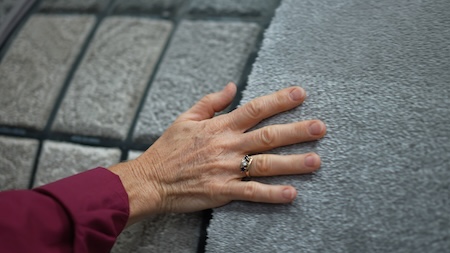 By opting for an eco-friendly carpet, you’re making an investment in both the health of your home and the health of the environment. And isn’t that what matters most?
By opting for an eco-friendly carpet, you’re making an investment in both the health of your home and the health of the environment. And isn’t that what matters most?
Benefits of Eco-Friendly Carpet Choices
Are there good reasons to select eco-friendly carpets? Of course! The good news is manufacturers are on board. They understand what homeowners want, and are constantly reevaluating their offerings to give you more of what you want. There are so many good reasons to select eco-friendly carpet.
Reduced Environmental Impact
Eco-friendly carpets are crafted with materials that have a lower environmental footprint, such as wool, jute, or recycled fibers. These materials are biodegradable and reduce the amount of waste that ends up in landfills. Some carpets even use recycled plastic bottles or fishing nets, giving a second life to materials that would otherwise contribute to pollution.
Example: Recycled polyester carpets are made from PET plastics, turning waste into a durable, stylish flooring option. Choosing these carpets supports a circular economy, where resources are reused and repurposed.
Improved Indoor Air Quality
Many traditional carpets are treated with chemicals that release VOCs, which can linger in the air and impact indoor air quality. Eco-friendly carpets are often manufactured without these harsh chemicals, providing a healthier living environment.
Low-VOC Options: Carpets labeled as low-VOC or VOC-free help minimize exposure to toxins, making them ideal for homes with children, pets, or individuals with allergies or respiratory sensitivities. Better air quality means a more comfortable and healthier home for everyone.
Renewable and Sustainable Materials
Eco-friendly carpets often use natural fibers such as wool, jute, seagrass, or sisal. These materials are not only renewable but also durable and aesthetically pleasing.
Natural Fibers: Wool is a luxurious, soft, and resilient material that naturally repels dirt and stains. Jute and Sisal are perfect for adding a rustic touch to your home while being tough enough for high-traffic areas. Supporting renewable materials helps reduce the reliance on finite resources and encourages sustainable farming practices.
Energy Efficiency and Insulation
Carpet naturally insulates your home, reducing the need for excessive heating or cooling. Eco-friendly carpets, particularly those made from wool, provide excellent thermal insulation, helping to maintain a comfortable indoor temperature.
How It Works: Wool fibers trap air, acting as a natural insulator that keeps rooms warm in the winter and cool in the summer. Lower energy consumption means reduced utility bills and a smaller carbon footprint.
Durability and Longevity
Eco-friendly carpets are often made from high-quality materials that stand up to wear and tear. Wool, for example, is naturally resilient and can last for decades with proper care.
Built For Longevity: When you select carpets designed to be tough and long-lasting, you’ll be reducing the frequency of replacements. Investing in durable flooring means less waste and fewer resources spent on replacements.
Stylish and Versatile Options
Sustainable doesn’t mean boring. Eco-friendly carpets come in a wide range of colors, patterns, and textures, ensuring you’ll find something that matches your style. Whether you prefer the rustic charm of sisal or the plush comfort of wool, there’s an eco-friendly option for every aesthetic.
Modern Designs: Manufacturers now offer contemporary patterns and neutral tones that blend seamlessly with modern interiors. Want bold and bright? You can go there too. With so many eco-friendly carpets available, you’ll find the flexibility you need to design your perfect space.
Tips for Choosing the Right Eco-Friendly Carpet
Check for Certifications: Look for labels like CRI Green Label Plus, Global Organic Textile Standard (GOTS), or Oeko-Tex Standard 100. These certifications indicate that the carpet meets environmental and health standards.
Consider Your Needs: Assess the room’s traffic levels, exposure to moisture, and desired comfort level to choose the best material. Wool may be ideal for a cozy bedroom, while jute works well in high-traffic areas.
Ask About Backing: SWhile it’s easy to get lost in focusing on the fibers, don’t forget there’s more to carpet than what you see. Ask about environmentally-friendly backings. Talk about the padding used for installation. Opt for options with natural or recycled products to ensure the entire flooring project is sustainable.
Evaluate Maintenance Requirements: Eco-friendly carpets like wool may require specific cleaning methods. Make sure you’re prepared to care for your investment properly.
Eco-Friendly Carpets as a Smart Investment
Choosing an eco-friendly carpet is more than a design decision—it’s a step toward a more sustainable, healthier home. With options that offer durability, style, and environmental benefits, you’ll easily find carpet to prove you don’t have to sacrifice beauty for responsibility.
Ready to explore eco-friendly carpet choices? Visit our showroom to see the latest options and learn how they can transform your space.
Let’s create a home that’s stylish, comfortable, and kind to the planet.
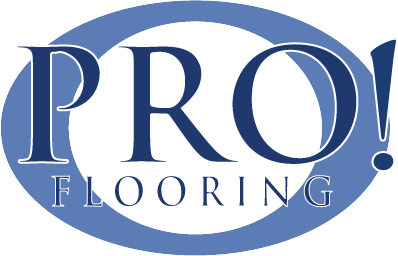

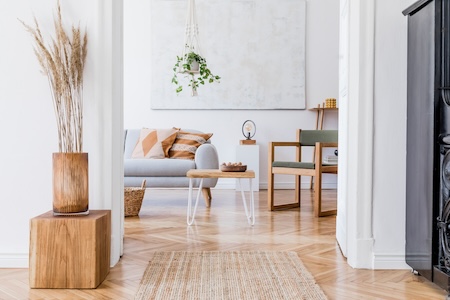 The size of your flooring planks or tiles can play a big role in how a room feels. Choosing wide planks or large-format tiles can help create a sense of expansiveness in small rooms, as they minimize the number of lines and grout joints on the floor.
The size of your flooring planks or tiles can play a big role in how a room feels. Choosing wide planks or large-format tiles can help create a sense of expansiveness in small rooms, as they minimize the number of lines and grout joints on the floor.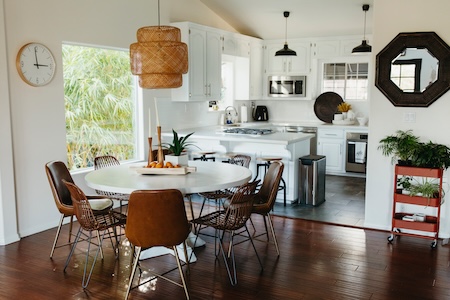 When it comes to adding warmth, carpet is one of the top choices. Carpet provides natural insulation, helping to keep spaces warmer in the winter and reducing the need for excessive heating.
When it comes to adding warmth, carpet is one of the top choices. Carpet provides natural insulation, helping to keep spaces warmer in the winter and reducing the need for excessive heating.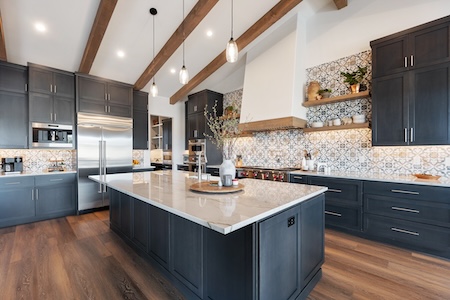 That’s because each type of hardwood has its own look, feel, and character. Understanding the unique qualities of different wood tones and grains can help you achieve your desired style.
That’s because each type of hardwood has its own look, feel, and character. Understanding the unique qualities of different wood tones and grains can help you achieve your desired style.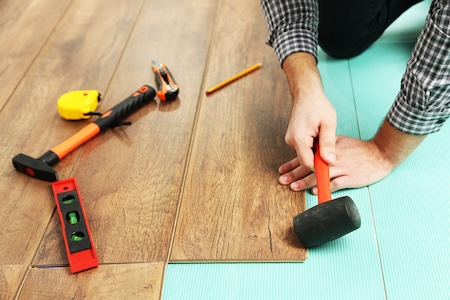 Without proper leveling, floors can develop creaks and squeaks as they flex under pressure. For materials like hardwood, an uneven subfloor can cause planks to pull away or warp as they try to adjust to the irregular surface.
Without proper leveling, floors can develop creaks and squeaks as they flex under pressure. For materials like hardwood, an uneven subfloor can cause planks to pull away or warp as they try to adjust to the irregular surface. Before we dive into flooring types, let’s talk about why choosing the right floor is so important for indoor/outdoor spaces. The floor sets the tone for the entire area, providing both style and function. You’re combining your living spaces to take advantage of Colorado’s weather. You want indoor floors to blend outdoors. That means floors need to be able to withstand the elements while remaining comfortable, safe, and easy to maintain.
Before we dive into flooring types, let’s talk about why choosing the right floor is so important for indoor/outdoor spaces. The floor sets the tone for the entire area, providing both style and function. You’re combining your living spaces to take advantage of Colorado’s weather. You want indoor floors to blend outdoors. That means floors need to be able to withstand the elements while remaining comfortable, safe, and easy to maintain.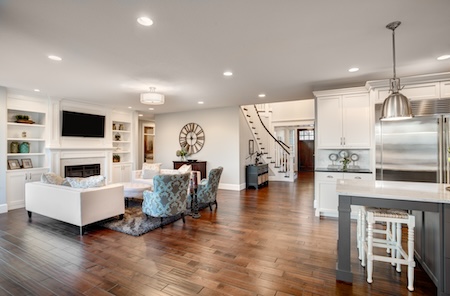 Not sure if LVP is right for you? Then we suggest porcelain tile. Porcelain tile is another versatile, cost-effective option that can replicate the appearance of high-end materials like marble, travertine, or even wood. Porcelain is durable, water-resistant, and comes in a range of styles that can add elegance to any room.
Not sure if LVP is right for you? Then we suggest porcelain tile. Porcelain tile is another versatile, cost-effective option that can replicate the appearance of high-end materials like marble, travertine, or even wood. Porcelain is durable, water-resistant, and comes in a range of styles that can add elegance to any room.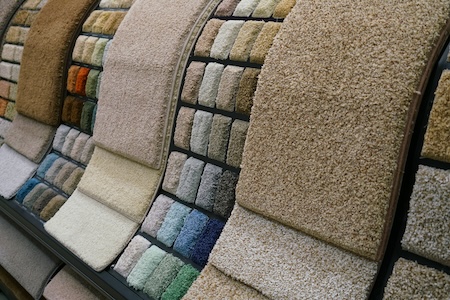 Carpet is an excellent sound absorber. In high-traffic areas, this can be a huge advantage, especially in homes with kids or pets. The fibers in the carpet
Carpet is an excellent sound absorber. In high-traffic areas, this can be a huge advantage, especially in homes with kids or pets. The fibers in the carpet 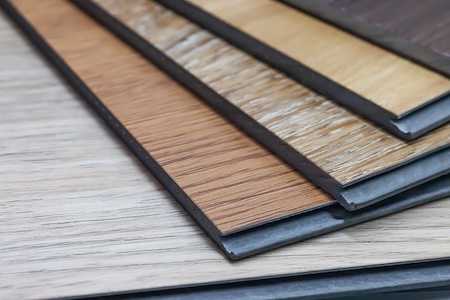 Are you already seeing the possibilities? For many homeowners, it’s easy to see why LVP is a great choice. But to truly get the most out of your flooring, it’s essential to select high-quality materials. Here’s how to make sure you’re choosing the best luxury vinyl and what you can do to keep it in pristine condition.
Are you already seeing the possibilities? For many homeowners, it’s easy to see why LVP is a great choice. But to truly get the most out of your flooring, it’s essential to select high-quality materials. Here’s how to make sure you’re choosing the best luxury vinyl and what you can do to keep it in pristine condition.